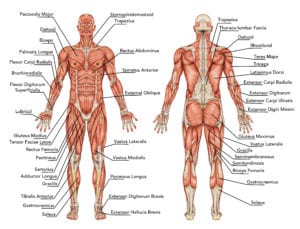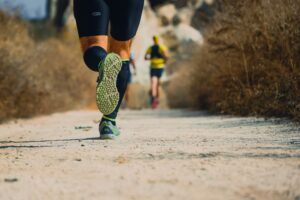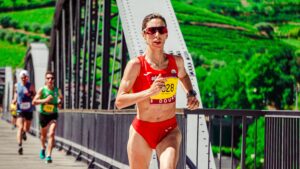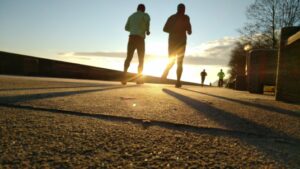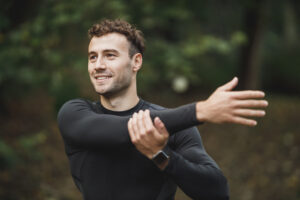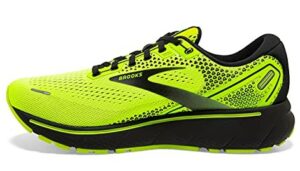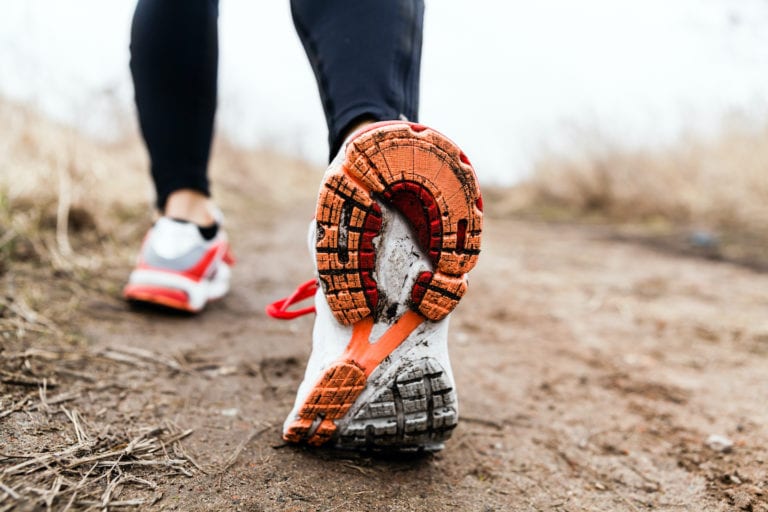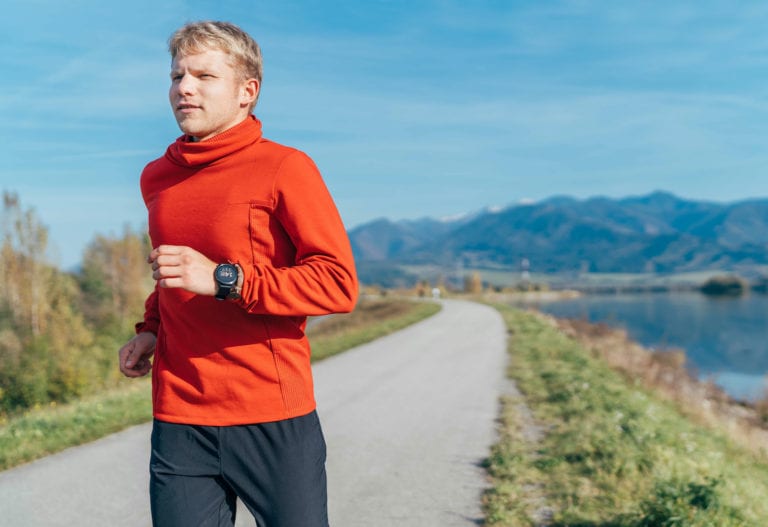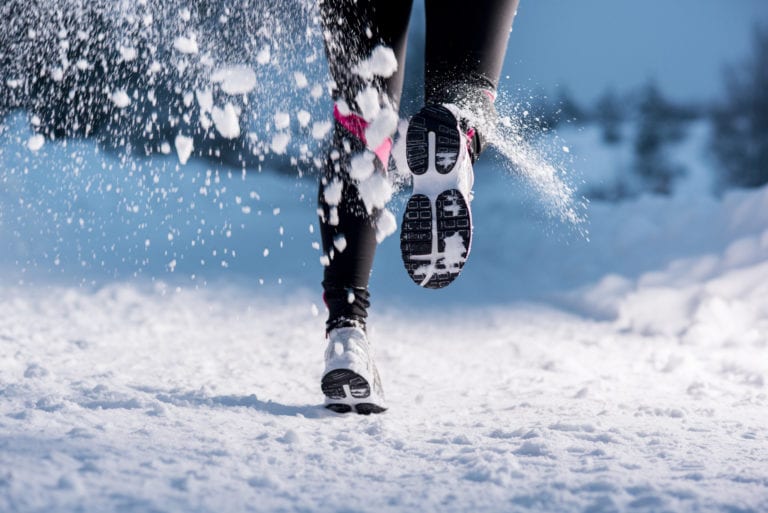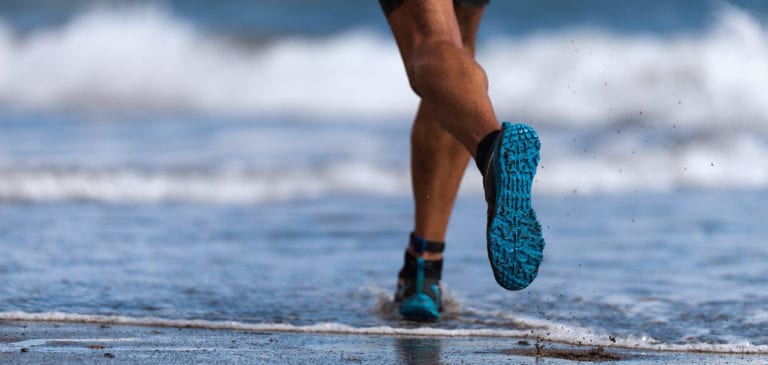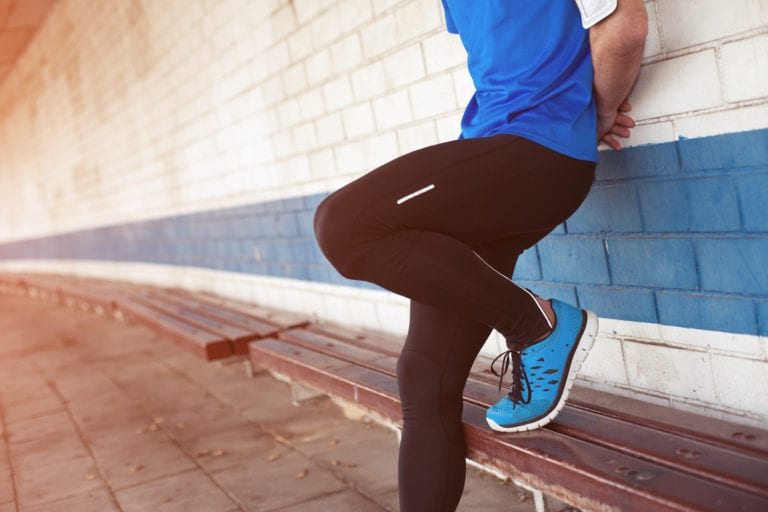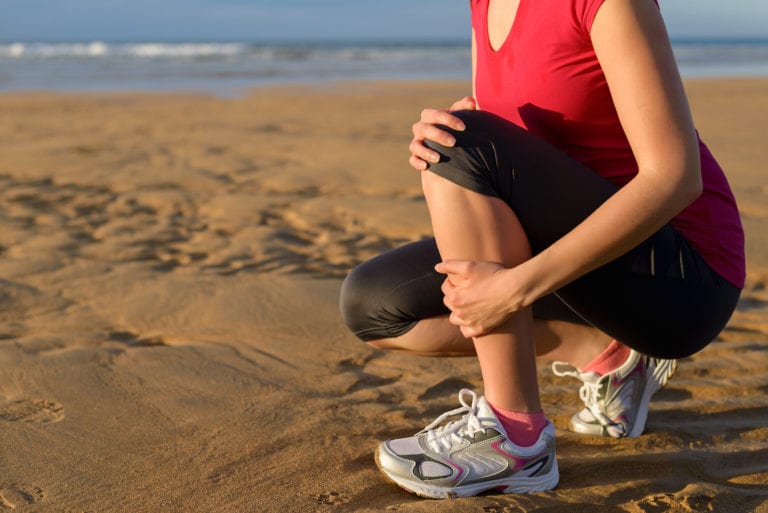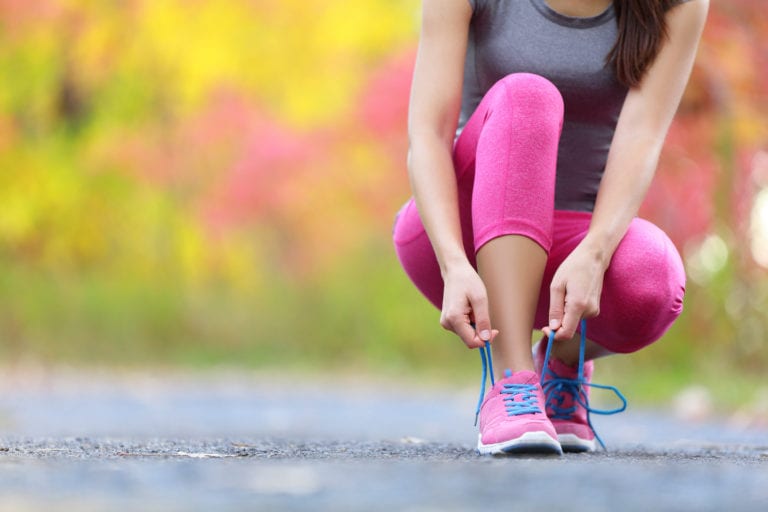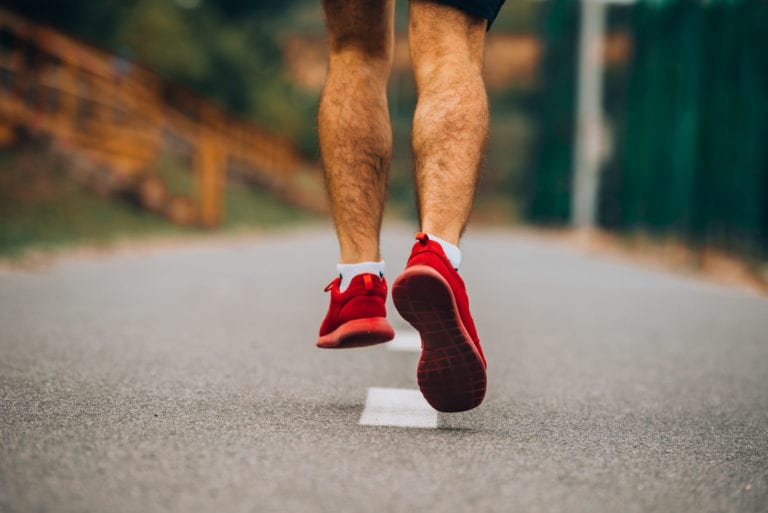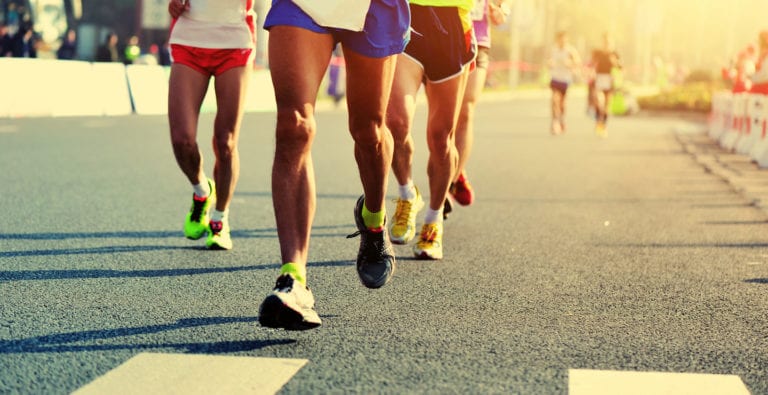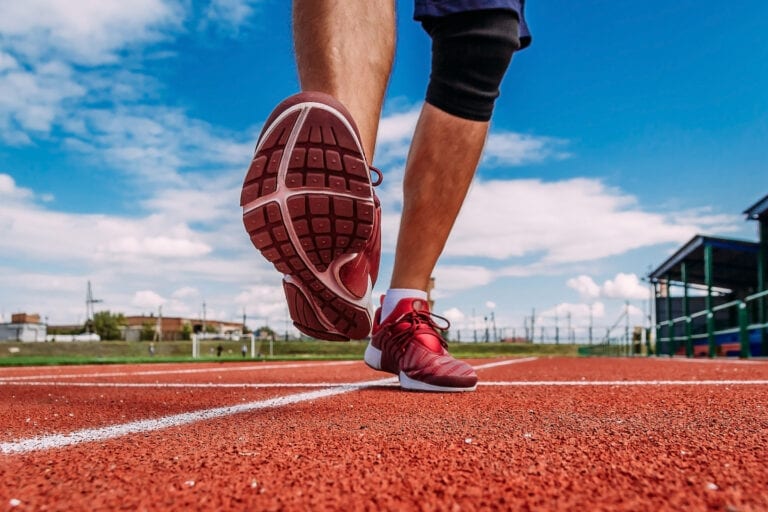Running performance can be improved by looking at a number of intrinsic and external factors, which you can do by sticking to a regular training program that focuses not just on volume and speed increases, but also on your running form and economy.
How does stride length play a part in running economy and what can you do to influence this positively? The length of your stride, i.e. the distance between the toes of one foot and the toes of the other foot when you run, has an impact on your overall running form. In time, this can determine better or faster running, as well as injury risks.
In this article, we’ll cover:
- The difference between stride length and cadence and what each of them mean
- How stride length affects your running form
- What you can do to improve running economy
What Are Stride Length and Cadence?

There is generally a lot of confusion between these two terms, mostly because they’ve been used interchangeably. However, the two refer to different measurements as applied to your running form.
Cadence (steps per minute)
When we talk about your stride, we often refer to your cadence. This term covers how many steps you take per minute during a run. Some people simply count the number of times their left foot touches the ground during one minute, then multiply by 2 to get their total SPM figure. Others use a metronome or a running watch with an SPM counter built in.
Traditional running literature has always suggested that a higher cadence is better for you. Runners with a higher number of steps per minute have less ground contact time, land more lightly and put less pressure on their joints and body overall.
This all harks back to the 1984 Olympics, when running coach Jack Daniels measured the cadence of elite runners and came up with 180 steps per minute as the “Holy Grail” that all runners should aim for.
However, while taking quicker and more frequent steps has been shown to keep runners more injury free, there is no “magic number” we can determine for what you should strive towards. In this article, we’ve laid out how cadence can be linked with injury risk and how you can train to develop better running stride / cadence.
Stride length
The relationship between cadence and stride length is determined by the following equation:
Running speed = running cadence (SPM) x stride length
Therefore, a stride length calculator simply requires you to divide your running speed during a session by your known SPM. With a running watch, you should be able to get both those two data points and determine your average stride to begin with.
You can also derive your stride length from walking speed and stride time, as explained here.
Ideal Stride length
There is no ideal length for your stride, as it all hinges on your running mechanics. In fact, it is a known statistic that the average walking step length is about 2.5 feet, or 30 inches. This means that the average walking stride length is twice that – 5 feet or 60 inches.
Is this number one to aim for? Not really, as it’s heavily influenced by the length of your limbs, your hip joints, and even the underfoot terrain. And, when it comes to running, the walking metrics don’t really translate smoothly. This is why, instead of focusing on stride length, research has honed in on running cadence instead.
How Does Stride Length Affect Your Running?
If we consider the direct relationship between stride length, speed, and cadence, it becomes obvious that increasing either the cadence or the length of your stride should enable you to run faster. However, too long of a stride will lead to bad running form and over-striding, which in turn has been linked to injuries.
Surveys show that the average cadence runners take is between 150 and 170 steps per minute, whereas as we’ve seen, previous studies have put the “ideal” cadence at 180 steps per minute.
The more frequent your steps, the shorter your running stride will be, and this will make you more efficient and less prone to over-striding.
What Is the Problem With Over-striding?
Over-striding is defined as a sometimes calculated stride that runners take where they over-reach, leading to landing on their heels first and extending their leg out more than they would do in the course of a normal stride. This usually happens when you try to run faster. It can lead to muscle and joint damage, especially if you haven’t warmed up properly.
Very often, runners with a low cadence tend to over-stride, leading to excess vertical oscillation. This means your body will bounce up and down when you really want it to be moving smoothly forward. The result is energy waste and slower running.
How To Improve Your Running Economy and Practice the Ideal Stride Length
To move as efficiently as possible, runners should focus on increasing the number of steps per minute they take, rather than the length of their stride. They also need to look at proper running form and support this with running drills and strength and conditioning exercises.
Increased Cadence
Increasing the number of steps per minute may shorten your running stride length, but this is for the better. Higher cadence means a lighter, faster moving stride, which keeps you off the ground more during your run. Especially for road runners, this can keep you safe from over-use injuries caused by the repeated impact of landing on a hard surface.
To increase your running cadence, you can also look to vary your running terrain and take to the trails. In an uneven setting, with obstacles and variations at every turn, you won’t be as tempted to lengthen your stride and you’ll naturally focus on moving your feet faster to stay stable and nimble.
Improving Your Running Form
In addition to higher cadence, there are a few aspects of running form you can work on to ensure your stride is as efficient as possible, and not too long:
- Try to land with your feet directly under your center of gravity – avoid your feet landing in front of you
- Lean forward from the hips as you run (without bending from the upper back!)
- Keep your head upright during you run – imagine an invisible piece of string is pulling you up from the top of your head
- Relax your shoulders and lower them if you notice them bunching upwards
- Ensure you don’t swing your arms from side to side or crisscross them in front of you – your arms should move on a straight axis from front to back, elbows close to the body
The key to developing a good, efficient running form is practice.
Try to follow these cues as you set off for an easy run using your normal stride, at least once a week. In time, you may notice your cadence increasing or the speed of your easy run going up for the same heart rate (that’s the definition of improved running economy!).
Running Drills and Cross Training
Following a cross training program in addition to your run training can be very beneficial for developing good running form. Additionally, incorporating some standard drills in your warm-ups will also pay dividends by activating your muscle memory and helping your body develop running efficiency.
Performing some of the drills listed in our article for cadence running can be very helpful.
In addition, to develop a better foot strike where you are landing on the forefoot and avoid hitting the ground in front of your center of gravity, you can perform some striding drills:
- Bounds. Leap from foot to foot for about 30 meters at a time. This helps increase your stride length without sacrificing cadence, as you’re focusing on a long stride at the same time as quick step turnover. Try to maximize time spent in the air vs. time on the ground.
- Hops. These are performed as hops or skips over 30 meters at a time. Do one set where you focus on length of distance covered to make your stride more efficient, then one set where you focus on the vertical distance covered (jumping higher) to develop your calf muscles and practice landing on the balls of your feet.
- Classic strides. These are 20-second bursts of fast running performed before a speed session (where you might do intervals or fartlek training). Focus on moving fast by landing lightly and keeping a high step count.
Stride Length for Runners: Improving Your Running Economy
There is no such thing as a perfect stride length, just as the ideal cadence does not necessarily apply to everyone in equal measure.
Gait patterns can vary from runner to runner based on biomechanical factors, as well as their experience and fitness levels. As a result, rather than trying to focus on a “magic” stride length or cadence count, we advise that you develop a good overall running form. Such as incorporating running drills into your training, varying the type of workouts you do, and adding strength and conditioning as well as mobility exercises to your routine.
In time, these will all contribute to developing an efficient running form, keeping you safe from injuries and improving your speed and running economy.

